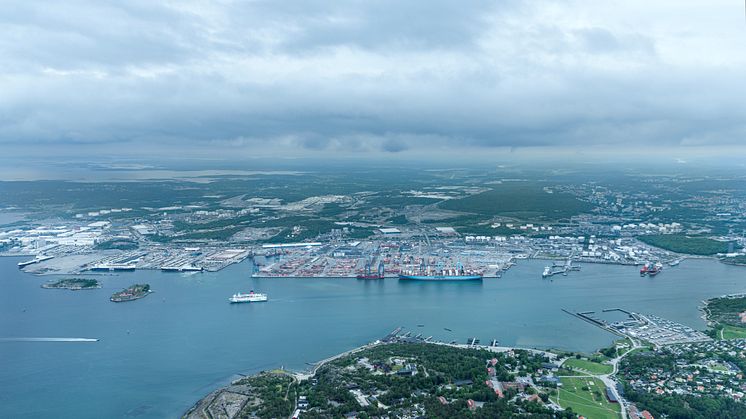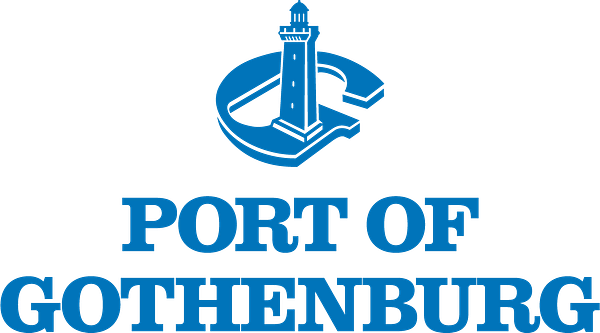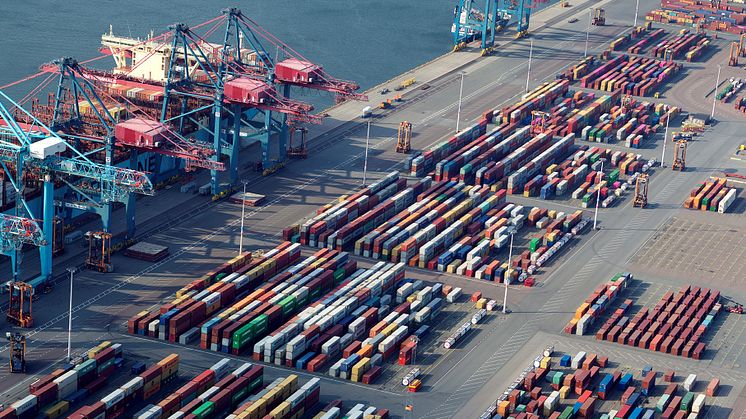
Press release -
Increased freight volumes at the Port of Gothenburg – but “the shopping frenzy is over”
The strained situation in the global transport system that has prevailed over the year has been managed well at the Port of Gothenburg. The port has also increased the freight volume handled in total, and is also winning market shares in all segments.
Container handling via the Port of Gothenburg continues to increase. The final quarter of 2022 saw an increase of 8%, which means that the port is seeing growth in container volume for the ninth successive quarter. 885,000 TEUs* were handled at the Port of Gothenburg in the full year 2022, an increase of 7%. Most of the port’s container volumes are handled by the terminal operator APM Terminals.
The total Swedish container market remained unchanged in 2022**. This means that the volume increase at the Port of Gothenburg represents an increase in market share from 50% to 53%. The Port of Gothenburg also increased its market share compared with nearby major ports in Northern Europe.
Transporting container freight by rail to and from the port’s inland terminals all over the country is very common. The volume of container freight being transported by rail increased by 12% to 515,000 TEUs. The increase is in both long-distance and more short-distance rail operations, although the biggest increase is evident in traffic to and from Northern Sweden. In 2023, additional rail operations that have now been agreed will start to serve the port from destinations all over Sweden.
New vehicles, ro-ro and energy
The vehicle segment was adversely affected during the year by factors such as component shortages and low sales of new vehicles, both in Sweden and abroad, and this is reflected in the Port of Gothenburg’s volume figures. The final quarter of 2022 did, however, see a recovery, as volumes increased by 9% compared with the same quarter in 2021, even though the full year 2022 ended with a reduction of 7% in total. There was, however, a 1% increase in market share for Port of Gothenburg.
Intra-European ro-ro traffic fell by 1% during the full year 2022, although the Port of Gothenburg’s market share increased from 17 to 18%.
The handling of energy products increased by 16% for the full year 2022. Both unloading of refined products and storage of unrefined products increased. The market share grew from 36% to 40%.
Looking ahead with Elvir Dzanic, CEO of the Gothenburg Port Authority
“Towards the end of 2022, we started to see a return to normal conditions in the logistics system after the years of pandemic accompanied by bottleneck problems, closures and shortages in both capacity and ships. With a coming recession and reduced global demand for transport activities, we are seeing an increasing global surplus of ships and equipment in many segments, which is affecting prices in the market.
Having consumed our way through a number of years of restrictions to varying degrees, we’re spending the money we have left over – once we’ve paid our electricity bills and interest – on experiences, travel, restaurant visits and other entertainment. Instead of on new electronics or an extended veranda. The signals from our import customers are clear: the big shopping frenzy is over.
Consumer goods such as clothing, home electronics and so on are areas where we’re seeing falling import volumes in general. We saw clear indications towards the end of 2022, and the initial trend in 2023 suggests a further decline, as product owners in many cases have full warehouses and are seeing lower demand, resulting in reduced transport requirements. We’ve already seen clear trends in which volumes are falling.
Swedish manufacturing industry remains healthy – customers indicate stable order books and a continued good volume trend. Swedish exports will remain strong in the future, and companies continue to invest.
The Swedish forestry industry is very strong, with the same indications of increased volumes through 2023. High-quality Swedish wood, paper, cardboard and pulp are domestic products through and through that remain in demand, and the Swedish krona is at a low level.
Automotive is another segment in which production remains stable. The imbalance that prevailed in production chains meant that supplies of vehicles were unable to meet demand. That issue has now started to ease, which paves the way for increased sales and production. After a tough period, more transport capacity will be needed at a global level.
At the Port of Gothenburg, we can look back on a strong year in which we have won market shares in all segments in Sweden, and have strengthened our position in the market compared with competing ports in the EU. Our focus in the future is to continue our work on the transition with undiminished vigour, which will also create value, opportunities and competitive benefits for our customers.”
Port of Gothenburg’s freight volumes 2022
Full year 2022 | Full year 2021 | % Comp. | Q4 2022 | Q4 2021 | % Comp. | |
Containers, TEUs | 885,000 | 828,000 | 7% | 230,000 | 212,000 | 8% |
Rail, TEUs | 515,000 | 458,000 | 12% | 130,000 | 118,000 | 11% |
Ro-ro units | 561,000 | 565,000 | -1% | 135,000 | 145,000 | -7% |
New cars | 238,000 | 254,000 | -7% | 72,000 | 66,000 | 9% |
Passengers | 1,414,000 | 765,000 | 85% | 258,000 | 224,000 | 15% |
Cruise ship calls | 81 | 66 | 23% | 12 | 6 | 100% |
Energy (million tonnes) | 22.3 | 19.1 | 16% | 5.8 | 4.4 | 33% |
Dry bulk (thousand tonnes) | 375 | 256 | 47% | 91 | 73 | 25% |
* A TEU (twenty-foot equivalent unit) corresponds to one twenty-foot container.
** Sweden’s market shares are compiled by the industry organisation Ports of Sweden. There is a slight time lag – the latest figures available refer to Q1-Q3 2022.
Topics
Fact file: Port of Gothenburg
The Port of Gothenburg is the largest port in Scandinavia. Around 30% of Swedish domestic and foreign trade passes through the Port of Gothenburg and over 50% of all container traffic. The port is a full-service port, and offers industry guaranteed, climate-smart access to the whole world. Direct services to key markets ensure highly efficient, sustainable, and reliable transport 24 hours a day, 365 days a year. The focus is firmly on sustainability, innovation, and digitalisation in a concerted effort to maintain the ongoing development of climate-efficient freight transport and calls by vessels. With over 30 rail shuttles offering daily departures, companies throughout Sweden and Norway have a direct, climate-neutral service to the Port of Gothenburg. The port handles energy products, vehicles, ro-ro units, containers and passengers. 22,000 people are employed at the port.
Follow us on:
Facebook
Instagram
LinkedIn
Twitter
www.portofgothenburg.com


